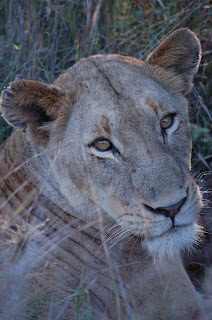
Tomorrow, May 30, 2010 marks the 85th running of Comrades, a 56 mile race between Pietermaritzburg and Durban. This is a race full of history and tradition and is an iconic event both in South Africa and the running world. The race started with 34 runners in 1921 as a living memorial to the fallen soldiers--their "comrades" of World War I. It has been run every year since, with the exception of the World War II years. Tomorrow, some 20,000+ runners from South Africa and around the world will try their luck in the land of the 1,000 hills. I will join them.
Each year the course changes directions, with runs originating in Durban called "up" runs and those starting in Pietermaritzburg "down" runs. Either way, you will be going both up and down. A lot. Driving the course yesterday, I could see that there is no flat ground to be found. Our Comrades Ambassador was quick to point out that most of the rollers aren't hills. There are 5 hills, all with names: Polly Shortts, Inchanga, Botha's Hill, Fields Hill and, finally, Cowie's Hill, followed by a rip-roaring descent to sea level in Durban. Hold onto to your quads early on kids, the ambassador advises. Those who run the first descents too hard will find coming home to Durban painful at best.
Comrades makes no politically correct claims to their race. It is a running race, not walking (although most will walk some sections, especially the steeper bits). There is a strict time cut off with no mercy, no apologies. You make it or you don't. There are no breaks if you're older or disabled. No wheelchair division. We are not all equal. There are different medals for different finishing times. And that's how it goes. Although we may not all be equal in ability, we are all treated as heroes.
Tomorrow I will get up at 2:00, leaving for Pietermaritzburg at 3:00 for the 5:30 am start. Which means I'm eating and going to bed very soon. I think about the words of Tim Noakes, famous runner, coach and Comrades participant:
'In each race I have learned the desire to quit comes but once. It is a coward that once beaten does not return. But as I begin the descent of Fields Hill, even this knowledge is of no assistance. It is here on this major descent, that I am joined by the final tormentor. The continual jarring of sharp descents from Inchanga, Botha's Hill and Hillcrest has taken its toll on my quadriceps and every step now sends an ever more painful shock down each thigh. Were the human brain able to recall the pain of Fields Hill, no one would run the down Comrades twice.
'This then is the point each runner, from the first to the last, must pass if he is to arrive in Durban on his own feet. It is here, stripped of any of society's false privileges, that he finds no hiding place, no shelter of convenience. Face to face with himself he must look deep inside.' 'These miles,' wrote George Sheehan, 'will challenge everything he holds dear, his value system, his lifestyle. They will ask nothing less than his view of the universe.'



















